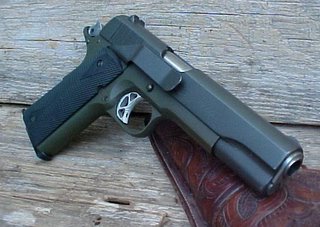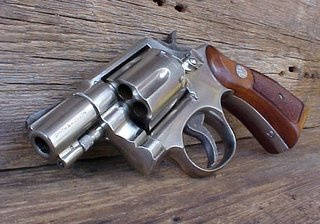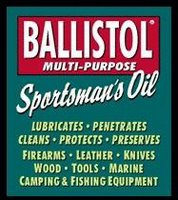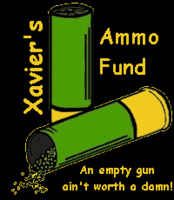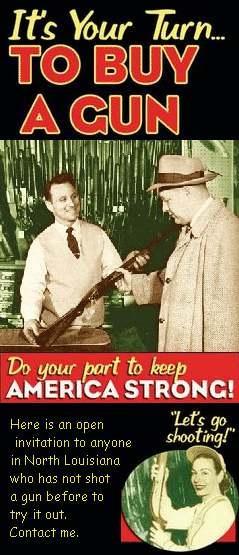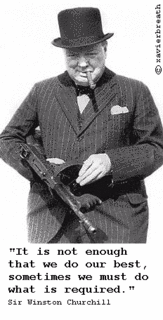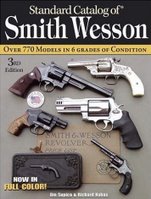I was at the range this morning, contentedly shooting my Gold Cup and my Clark 1911. I noticed, after several magazines, that a fellow in black BDUs was watching me intently. I shot another magazine through the Clark gun, and he sauntered over. "Want to run a mag or two?" I asked.
"No," he said, "It's just that I had one of them nine-eleven guns and it weren't worth crap. All it would do is jam up"
"Really?" I asked, "What kind was it?" I suppose I was expecting him to reply Armscor or Kimber.
I was surprised when he replied "Springfield."
"Yep, I just sold that some bitch," he declared, "I lost three hundret dollars on it too. It weren't worth crap."
"Where did you sell it?" I asked.
He gave me the address of Neil's pawn shop.

"Hello Neil!" I said cheerily as I walked inside.
"Where have you been?" Neil asked, "You missed a good .357 magnum last week."
"Dadgummit," I replied. "Well, since I'm here, let me see that old chrome pistol over there."
"This 'un ain't old," Neil stated as he removed the Springfield GI45.
"Mind if I fieldstrip it?" I asked.
I noted a McCormick magazine as I began the field stripping, and I asked if there were any additional mags. There were not. Once inside the pistol I saw that it had never been lubricated or cleaned. It had soot and silver metal filings all through it. I wiped a bit of the soot and metal dust onto a finger tip and sniffed it in front of Neil.
"How much?" I inquired.
"Tag says $349," countered an unimpressed Neil.
"Yep. Now how much do I have to give you to get this pistol out your door?" I smiled.
"Hell Xavier, $350 out the door." said Neil, "I know I can get that for this pistol."
"Yep, you sure can," I said. I broke out the checkbook.

I had the day off, so I took the Springfield home and began to clean it up. It quickly became evident that this pistol had very little wear. It had never been cleaned. There was evidence that some type of machine oil had been squirted across the top of the frame in a feeble attempt to lubricate it. I detail stripped the gun, cleaned it all with brake cleaner, then reassembled and lubricated it with Break-Free and Tetra grease.
The pistol actually cleaned up really well. As I worked it over, I made note of the MIM sear and disconnect, as well as the MIM extractor. I'm pretty sure there is more MIM in this pistol, but I'm not really concerned. I'll probably do nothing at all to it.

Once cleaned and lubricated, I took the stainless GI45 to the range to try it out. I shot 200 rounds of Winchester White Box, a box of MagTech, and some reloads. The pistol never skipped a beat. It was not my most accurate 1911, but it was reliable. It's amazing what a little lubrication will do.
I am not certain what I will do with this pistol. I may keep it for trade fodder, I may return it using Neil's generous return policy. There was a time that I wanted a stainless Springfield to learn checkering and engraving on. I may sacrifice it to that cause. One thing is for certain, however, this Springfield GI45 was a reliable firearm. It's previous owner just did not know how to
properly lubricate it.
Labels: 1911's, Gun Maintenance, Pawn Shop Circuit













